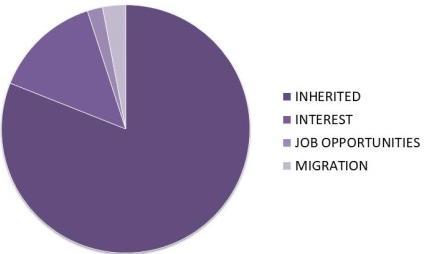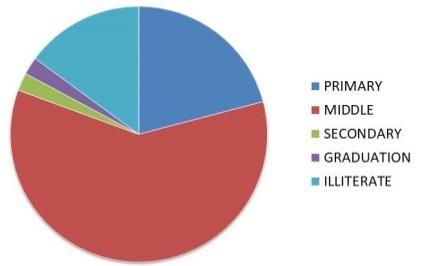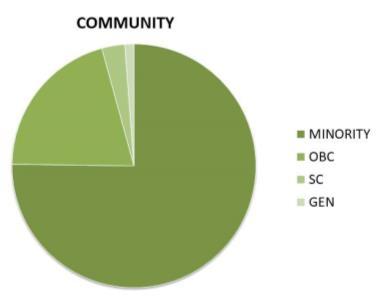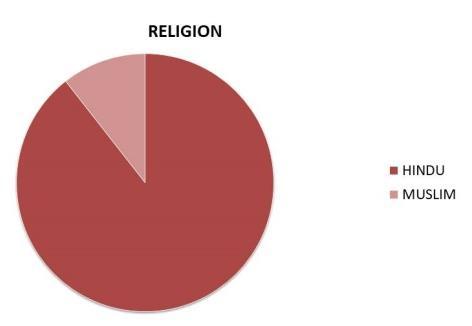
7 minute read
02 Problem identification of weavers of Varanasi through understanding architectural and social scenario
02
Problem identification of weavers of Varanasi through understanding architectural and social scenarios
Advertisement
Varanasi often referred to as the “city of temples and learning” is a sacred and holy place to Hindu, Buddhist, Jain and Muslim religion. It is the oldest living city and is heterogeneous with multiple layers of religion, culture, art forms, believes nature, profiles and individualities. The city has been a cultural and religious Centre in northern India for thousands of years due to which it has varied intangible heritage assets. Being home to numerous religious monuments, it serves as major destination for tourists from across the world. Apart from these Varanasi is home to a very fine art form, a living tradition, the weaving of Banarasi sarees. The art of weaving is an age old practice in the city and is one of the character defining features of Varanasi.
The traditional Banarasi saree is done with lot of hard work and skillful work using the silk. The saree making is a cottage industry for about 1.2 million people associated directly or indirectly. Though the Banarasi silk products are enjoying a ready market both at home and abroad, there are grey areas demanding immediate attention to sustain and further improve this traditional craft. Most amongst the above mentioned area has become slum pockets where occupation of the people living is dependent on this traditional art. Also there is lack of adequate information available for silk weavers in Banaras.
Varanasi continuously being known for world famous brocades and sarees wherein ethnic Banarasi brocades are the finest example of superb craftsmanship of Indian artisans has some harsh reality to face. There are 31,378 handlooms and 95,439 handloom weavers. Also through unofficial source there are 5, 00,000 weavers in the district. However, there is a significant decline of 16% from 1995-96 to 2009-10 (According to Handloom Census 2009-10), which is because of major shift of people from this sector to other jobs and to power looms (in power looms the sarees are rather produced faster, at cheaper rates and sometimes artificial silk is also used). And the margin of weavers shifting from handloom to other jobs and power looms has
been increasing with the years. This fine craft and a home based enterprise in the district mostly involves Muslim’s and Dalit’s, employed in this sector generation after generation, though
remaining poor and marginalized. Thus the research aims to identify the loop holes in this home based industry that are responsible for the downfall in the handloom market. The various factors has been assessed through social, economic and architectural perspectives. This has been done via literature and live case studies, as well as on site surveys with the weavers group.
2.1 Demographic information
Age Educational Level Preferences

Fig 1: Pie charts for age groups, educational level and preferences of the weaver’s community

Lesser involvement of Low educational level and
Mostly an inherited skill. younger generation. weaver. illiteracy results in Lack of Lack of job opportunities Threat to continue the art awareness and and lack of interest of people The original cost in making gets distributed amongst various actors. form. Independency. belonging to non-weaver family.
Social Composition Monthly Income


Fig 2: Pie charts for social composition and monthly incomes of the weaver’s community

Most of the population of weavers belongs to Muslim
Low wages of weavers minorities’ community. weaver. to sustain a proper lifestyle.They mostly remain marginalized and ignored. The original cost in making gets distributed amongst various actors.
2.2 Marketing practices
The Marketing practices that run in the banarasi handloom industry is also responsible for its downfall. As they are the last one to get benefitted in the chain from the products that they only produce. Weavers could not directly connect to the main market.
Weavers are dependent on master weavers and Gaddidars who channelize the chain of making and selling the products. Most of the weavers work under master weaver.
The original cost in making gets distributed amongst various actors.
Fig 3: Market chain of banarasi Handloom saree
2.3 Working and living environment
weaver. The original cost in making gets distributed amongst various actors.
Fig 5: Floor plans of a weaver’s house explained

Fig 6: Working and living space ratio of a weaver’s house Fig 4: Category of weavers
Since, weaving is a home based weaver. industry, so the working conditions at The original cost in making gets distributed amongst various actors. home are equally important for the weavers. Thereby, it is needed to ensure a separate working space in their house. But, this is rarely the case with the weavers.
More than 50% space used for working. Weavers living in slums in poor conditions. 8
Sanitation and Health issues.
Less space for living. Poor conditions of their houses.
No or less access of light and ventilation.
2.4 Social scenario
The social scenarios of the weavers involve the society and area that they live in, people involved in the business within the family and their restrictions. Weaving is considered to be one of the finest art form practiced in the country, yet the artists i.e. the weavers remains neglected and marginalized. Their economic conditions are so poor that they have got no options but to live in slums. 70 % of the slums are
dominated by weavers.
Involvement of family
Fig 7: Pie Chart of occupation wise population in slums members in making saree. Women of the family involved in the process. Women are generally not given credit for their smaller contribution.

Children are also involved for
some processes.
2.5 Status of banarasi saree
Weavers shifting professions.
Decrease in the percentage of the handloom production. Lack of art appreciation for the weaver’s community. No skill development opportunities.
No connections with the designers. No promotion of tourist activity in the area.
No linkage of weavers to the main market.
2.6 Problems with government policies
Area provided does not satisfy the needs of this home based industry. Government policies are meant for people living in slums considering all the categories while the houses of weavers community needs to design separately.
No working space provided, thus they have to work in the living area and kitchen or outside their houses.
Family sizes are not considered by the government, thus the living area is also not apt for bigger family size.
2.7 Institutional support in the city
Lesser no. of institutions in the city for the weavers. Institutions not within the reach of weaver’s community. Location of the buildings away from the weaver’s area and the market area. Lack of awareness amongst weavers for these institutions. Time taking procedure for the weavers to report in these institutions which harm their work life.
2.8 Conclusion
From the above chosen points of assessment, it is clear that the handloom business is facing the downfall, not because of one but many reasons. Weavers who are responsible to create or make these beautiful sarees are shifting their professions, which leads to lesser production of handloom sarees. Weavers group, who should be given most importance to, remains neglected and marginalized. They are the ones, who receive the bare minimum price of what they make. Not only this, but the working and living conditions of the weavers is very poor. The government policies fail to provide proper living conditions for weavers. As they focus on slum rehabilitation and development collectively. Whereas, weaving is a home based industry and thus requires a separate workspace in their house. The lack of interests in younger generations and no scope of jobs in this area, leads to no growth in the population of weavers community. Meanwhile, there is no institutional support that must guide the weavers through new technology and new design requirements. Thus, it becomes very important for the government to bring their focus on banarasi handloom industry. It is required to primarily focus on the weaver’s community and their needs. Otherwise, with such rapid decrease in the handloom production, there are chances of this art becoming extinct.



